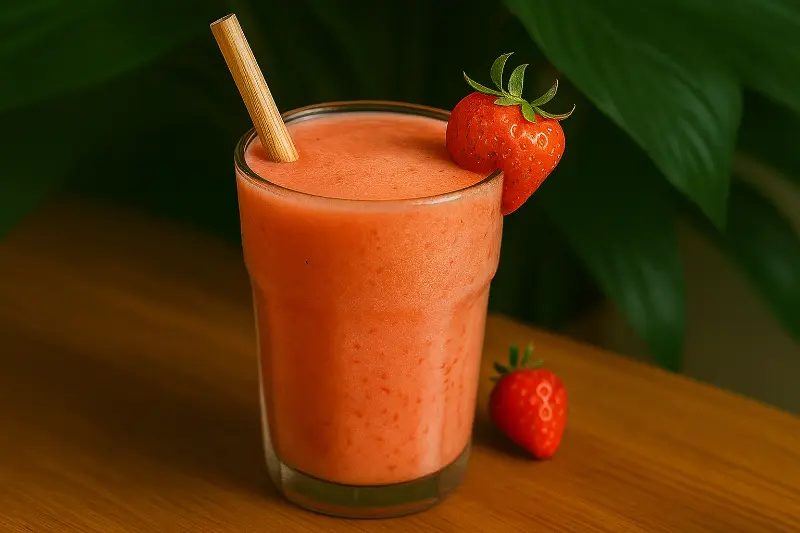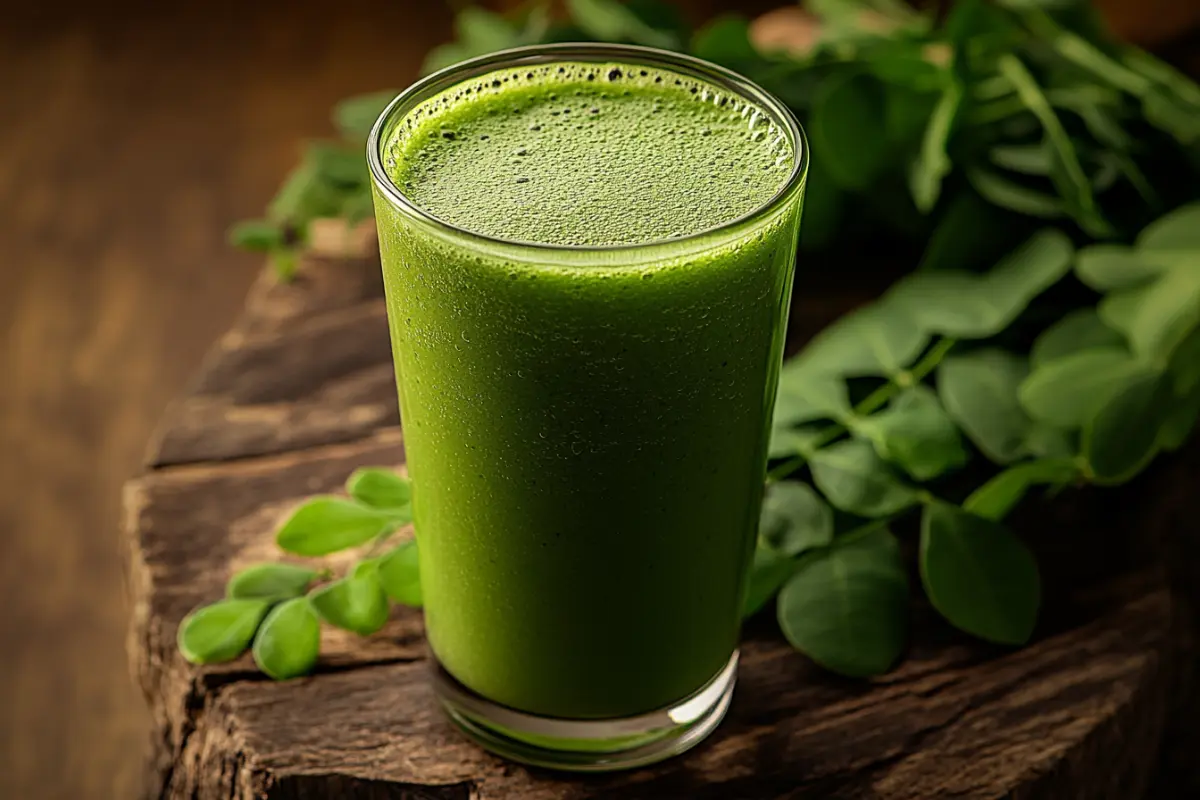The Peanut Paradise Tropical Smoothie is more than just a creamy treat it’s one of the most iconic and best-selling smoothies at Tropical Smoothie Café. Made with peanut butter, banana, non-fat yogurt, and a boost of whey or pea protein, the Peanut Paradise Tropical Smoothie delivers serious flavor and nutrition in every sip. Whether you’re craving a post-workout protein bomb or a meal replacement with real staying power, this smoothie hits the spot.
But how healthy is the Peanut Paradise Tropical Smoothie, really? Is it just a calorie-dense indulgence or a balanced option for fitness lovers and busy professionals? And how does it compare to other smoothies on the menu?
In this in-depth guide, we’ll cover:
- What’s in the Peanut Paradise Tropical Smoothie
- Its nutrition facts: calories, protein, sugar, and more
- Health comparisons with other top smoothies
- Pro tips to order it smarter
- And answers to the most-asked questions about this peanut-packed favorite
You’ll also discover better-for-you alternatives, lower-sugar tips, and ideas for customizing your smoothie to meet your goals.
Table of Contents
What’s in the Peanut Paradise Tropical Smoothie?
Peanut Paradise Tropical Smoothie: What’s Inside This Nutritional Giant
The peanut paradise tropical smoothie may taste like dessert, but under the hood, it’s packed with ingredients chosen for performance, energy, and satisfaction. If you’ve ever wondered what makes it so rich, creamy, and filling, here’s the complete breakdown of ingredients and their role in making this smoothie a top choice for fitness fans and flavor lovers alike.
Main Ingredients in Peanut Paradise Tropical Smoothie
Here’s what’s blended together in every cup:
| Ingredient | Function | Notes |
|---|---|---|
| Peanut Butter | Adds healthy fats and protein | Heart-healthy monounsaturated fats |
| Banana | Provides natural sweetness and potassium | Helps with smooth texture |
| Non-Fat Yogurt | Boosts creaminess and adds probiotics | Can be removed for dairy-free diets |
| Whey or Pea Protein | Adds 20g–25g of protein | Whey for fast digestion; pea is vegan |
| Water & Ice | Helps blend texture and chill smoothie | No added calories |
Whether you go with whey or pea protein, the calorie count and protein levels are strong either way. This blend was clearly created for people who want their smoothies to do more than just taste good.
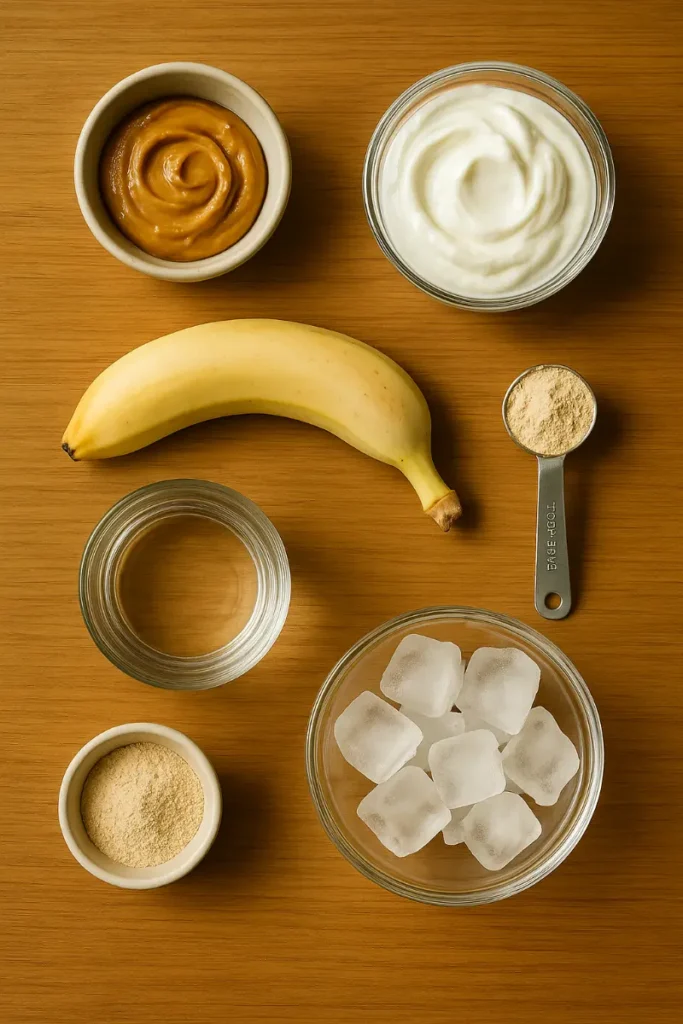
Nutrition Facts for Peanut Paradise Smoothie (Standard with Whey)
| Nutrient | Amount per 24oz Serving |
|---|---|
| Calories | 710 |
| Protein | 34g |
| Total Fat | 21g |
| Saturated Fat | 4g |
| Cholesterol | 15mg |
| Carbohydrates | 83g |
| Sugar | 50g |
| Dietary Fiber | 6g |
| Sodium | 240mg |
These numbers reflect the standard recipe with whey protein, which is a popular choice among gym-goers. If you’re plant-based, opting for pea protein changes the dairy content but keeps most of the protein benefits intact.
Is the Peanut Paradise Tropical Smoothie Healthy?
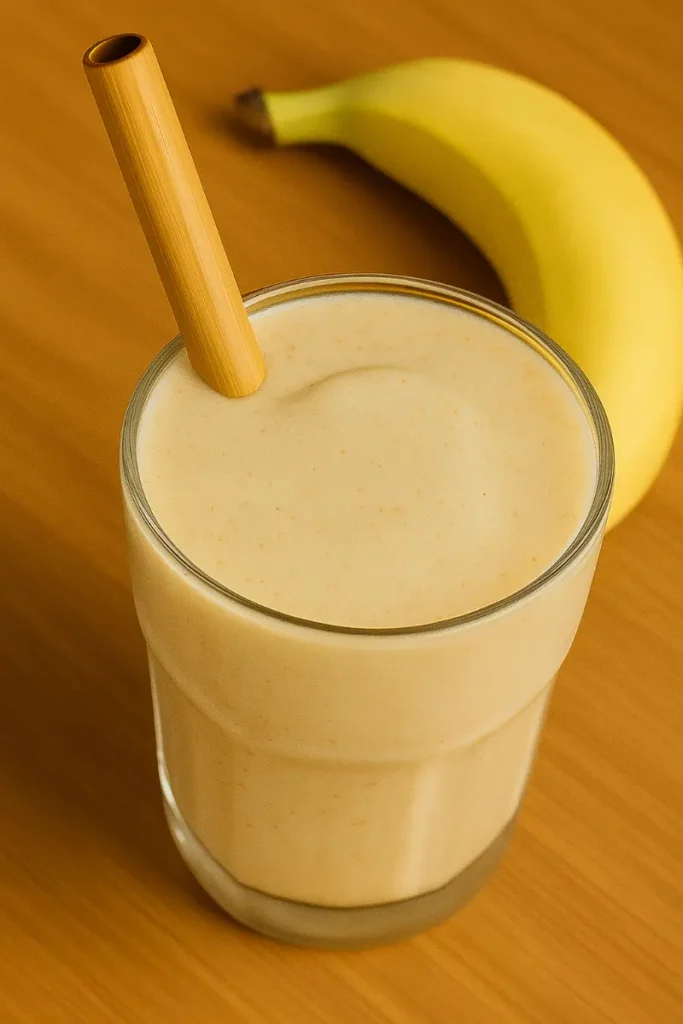
Health Benefits of Peanut Butter in Smoothies
The peanut paradise tropical smoothie owes much of its richness and nutrition to peanut butter. This ingredient adds:
- Heart-healthy fats
- Plant-based protein
- Fiber for digestion and fullness
- Vitamins like E, B3, and magnesium
While calorie-dense, peanut butter supports energy and satiety—ideal for those using the smoothie as a meal replacement or post-workout refuel.
Pros and Cons of Adding Protein Powders
Adding whey or pea protein boosts the smoothie’s benefits, but it’s not for everyone.
Pros:
- Increases muscle recovery
- Promotes longer fullness
- Adds up to 25g of protein
Cons:
- Raises calories to over 700 per smoothie
- May cause bloating for some
- Unnecessary if your diet already includes enough protein
Still, for active lifestyles, it makes the peanut paradise tropical smoothie more functional than indulgent.
What Dietitians Say About High-Calorie Smoothie
Dietitians often support high-calorie smoothies like this one if used with purpose. It’s great as a meal or workout recovery tool. But beware:
- Portion sizes matter
- Sugar content is high (around 50g)
- Daily intake can be easily exceeded if not tracked
In short, it’s healthy for the right person, especially when customized.
Sugar Content in Tropical Smoothie Café Drinks
How Much Sugar Is in the Peanut Paradise Tropical Smoothie?
The peanut paradise tropical smoothie packs around 50 grams of sugar in a 24 oz serving. While some of this sugar comes from natural sources like banana and yogurt, it still represents a significant amount, especially for those watching their blood sugar or calorie intake.
This sugar level is comparable to that of a sweetened coffee drink or a bottled fruit juice—making it important to consider your total daily intake.
Comparing Sugar Levels Across Smoothie Options
Let’s see how the peanut paradise tropical smoothie stacks up against other favorites at Tropical Smoothie Café:
| Smoothie Name | Sugar (per 24 oz) |
|---|---|
| Peanut Paradise (whey) | 50g |
| Bahama Mama | 61g |
| Detox Island Green | 29g |
| Chia Banana Boost (Peanut) | 43g |
| Paradise Point | 65g |
Clearly, the peanut paradise tropical smoothie lands somewhere in the middle—not the highest, but certainly not low-sugar either.
Tips for Reducing Sugar in Your Smoothie Order
Want the taste without the sugar overload? Here are quick hacks to help:
- Ask for no turbinado (added sugar)
- Request less banana
- Choose unsweetened plant-based milk or water
- Skip sweetened add-ins like chocolate or sweetened yogurt
Customizing your smoothie not only trims the sugar—it also cuts down on calories, making it easier to align with your health goals.
Most Popular Smoothies at Tropical Smoothie Café
Top 5 Best-Selling Smoothies Ranked
The peanut paradise tropical smoothie holds a strong spot in the lineup of fan favorites at Tropical Smoothie Café. But how does it compare to other top sellers? Based on popularity across social media, reviews, and in-store data, here’s how the top smoothies rank:
- Island Green Detox – Loved for its lower sugar and fresh greens
- Bahama Mama – A tropical, indulgent option with bold fruit flavor
- Peanut Paradise – Creamy, filling, and protein-packed
- Acai Berry Boost – A tangy antioxidant-rich pick
- Sunrise Sunset – Sweet, citrusy, and refreshing
While Island Green Detox leads among health-conscious drinkers, Peanut Paradise stands out for those wanting something heartier.
Where Does Peanut Paradise Rank Among Customers?
The peanut paradise tropical smoothie consistently ranks in the top 3 best-sellers, especially among:
- Gym-goers seeking high-protein drinks
- Peanut butter lovers
- Busy professionals looking for meal replacements
Its rich flavor and customizable protein make it a go-to for those who want more than just fruit and ice.
Seasonal and Limited-Time Smoothie Hits
While the core smoothies dominate year-round, Tropical Smoothie Café also offers seasonal releases. These often include:
- Watermelon Mojito Smoothie
- Mango Monsoon
- Pumpkin Spice Smoothie (fall limited edition)
Still, the peanut paradise tropical smoothie remains a year-round favorite, unlike some that fade with the season.
Discover great ideas like the fruit-packed Sunrise Sunset Tropical Smoothie, another fan favorite loaded with tropical flavor and vibrant color.
The Healthiest Smoothie Options at Tropical Smoothie
Low-Calorie Smoothie Alternatives
While the peanut paradise tropical smoothie is a solid choice for energy and recovery, it’s not the lowest-calorie option on the menu. If you’re looking for something lighter, here are a few alternatives:
- Detox Island Green (180 calories): Packed with spinach, kale, mango, pineapple, banana, and ginger—with no added sugar.
- Avocolada (420 calories): Avocado, pineapple, spinach, kale, coconut, and lime—filling but lighter than nut-based smoothies.
- Sunrise Sunset (350 calories): A vibrant fruit blend with a citrus twist, low in fat but still flavorful.
These choices are ideal for those tracking calories or aiming for weight loss, but still want nutrient-dense, refreshing smoothies.
Looking for inspiration? Try the refreshing Kiwi Quencher Tropical Smoothie, a balance of sweetness, vitamin C, and lean nutrition.
What is the Healthiest Food Item at Tropical Smoothie Café?
Beyond smoothies, Tropical Smoothie offers a variety of food items. The healthiest options tend to be:
- Supergreen Caesar Chicken Wrap (490 calories): Loaded with greens and grilled chicken, this wrap balances lean protein and fiber.
- Southwest Wrap (light dressing): High in protein and veggies, especially when ordered with dressing on the side.
- Hummus Veggie Wrap: A meatless option rich in fiber, perfect for plant-based diets.
Pairing these meals with a low-sugar smoothie helps balance your intake and keeps you full without overloading on calories.
Best Combos for Fitness & Weight Loss Goals
If your goal is to eat clean or slim down, here are smart pairing suggestions:
- Detox Island Green + Hummus Veggie Wrap
- Sunrise Sunset + Chicken Caesar Wrap (half portion)
- Avocolada + Side of Fruit
The peanut paradise tropical smoothie may be too calorie-heavy for a weight loss plan unless you’re using it as a standalone meal.
Don’t miss our Moringa Smoothie Recipe for a plant-based, detox-friendly option that’s rich in vitamins and antioxidants.
Comparing Peanut Paradise vs Peanut Power Plus
What’s in the Peanut Power Plus Smoothie?
The Peanut Power Plus smoothie is another popular option at Tropical Smoothie Café, often compared to the peanut paradise tropical smoothie due to their similar ingredients. However, there are key differences.
Peanut Power Plus contains:
- Peanut butter
- Banana
- Non-fat yogurt
- Choice of whey or pea protein
- Added turbinado sugar
- Chocolate or regular base (based on selection)
Calories vary based on your protein choice, but they often range between 800–900 calories per smoothie making it even denser than Peanut Paradise.
Nutrition Comparison: Peanut Paradise vs Peanut Power Plus
Here’s a side-by-side comparison to help you see the difference:
| Smoothie | Calories | Protein | Sugar | Primary Flavor |
|---|---|---|---|---|
| Peanut Paradise | 710 | 34g | 50g | Peanut/banana |
| Peanut Power Plus | 850–900 | 36g | 66g+ | Peanut/chocolate |
While both are high in protein and flavor, Peanut Power Plus adds more sugar and calories primarily due to its chocolate base and added turbinado. For those monitoring sugar intake, Peanut Paradise is the lighter choice.
Which Smoothie is Better for Muscle Building or Weight Gain?
If you’re focused on muscle gain or bulking, Peanut Power Plus might give you more overall calories and carbs. However:
- Choose Peanut Paradise if you want high protein with less sugar and fat.
- Choose Peanut Power Plus if you need maximum calories and don’t mind the sugar hit.
In the end, it comes down to your personal goals. Both smoothies support recovery and energy, but Peanut Paradise is more balanced for general health, while Peanut Power Plus is better suited for athletes in need of serious fuel.
Who Has the Healthiest Smoothie in the Market?
Tropical Smoothie Café vs Jamba Juice vs Smoothie King
When comparing smoothie chains, the peanut paradise tropical smoothie sits in the middle—higher in calories, but more protein-rich than most fruit-based blends. But how does Tropical Smoothie Café compare overall?
- Tropical Smoothie Café: Balanced menu with customizable smoothies, real fruits, and protein options like whey and pea. Sugar levels vary by smoothie.
- Jamba Juice: Known for fruit-heavy, lower-calorie smoothies. Many contain added sugars and less protein unless boosted.
- Smoothie King: Offers fitness-focused blends with protein, supplements, and low-carb options. Clean blends and keto lines are standouts.
Tropical Smoothie often appeals to people who want a meal-like smoothie, while Jamba fits lighter snack needs. Smoothie King caters well to fitness goals and strict diets.
Check out antioxidant-rich blends like the Green Tea Berry Smoothie if you’re exploring lower-sugar, functional drinks.
How to Judge a Smoothie’s Health Rating
Not all smoothies are created equal—even if they sound healthy. Here’s how to evaluate them:
- Calories: Should match your goal—meal or snack?
- Protein: Aim for 15g+ if it’s replacing a meal
- Sugar: Under 30g is ideal unless used for energy recovery
- Fat: Healthy fats from nuts or seeds are better than creamy syrups
- Fiber: A smoothie with 4g+ fiber helps digestion and fullness
The peanut paradise tropical smoothie passes most of these if you treat it as a meal, not a light refreshment.
Smart Smoothie Ordering Hacks
Make any smoothie healthier by:
- Skipping turbinado or added sugar
- Choosing unsweetened bases like almond milk or water
- Reducing banana or asking for half portions
- Adding greens or fiber-rich boosts
- Swapping yogurt for plant-based options
These tricks work whether you’re ordering from Tropical Smoothie, Jamba, or Smoothie King.
FAQs
What’s in Tropical Smoothie Peanut Paradise?
The peanut paradise tropical smoothie contains peanut butter, banana, non-fat yogurt, and your choice of whey or pea protein. It’s blended with ice and water for a smooth, creamy texture and high protein content.
Is the Peanut Paradise Smoothie Healthy?
Yes—if consumed intentionally. It provides balanced macros (protein, fat, carbs) and can work as a meal replacement or post-workout drink. However, it’s high in calories and sugar, so not ideal for low-calorie or low-carb diets.
What’s the Most Popular Smoothie at Tropical Smoothie?
The Island Green Detox is considered the most popular overall due to its low sugar and nutrient-dense greens. However, the peanut paradise tropical smoothie ranks high among protein lovers and gym-goers.
How Much Sugar Is in Peanut Paradise?
It contains around 50 grams of sugar in a 24 oz serving. Most of it comes from bananas and yogurt, but added turbinado sugar can increase it further unless you ask to remove it.
What Is the Healthiest Food Item at Tropical Smoothie?
The Supergreen Caesar Chicken Wrap is a top pick—low in sugar and packed with lean protein and fiber. For lighter meals, the Hummus Veggie Wrap or a side salad with light dressing are good choices.
Is the Peanut Power Plus Smoothie Healthy?
It depends on your needs. The Peanut Power Plus is calorie-heavy (up to 900 kcal) and contains more sugar than Peanut Paradise. It’s great for weight gain or post-workout refueling but less ideal for everyday snacking.
Who Has the Healthiest Smoothie?
Among major smoothie chains, Smoothie King offers clean, low-carb, and keto-friendly blends. Tropical Smoothie Café excels at high-protein, customizable options like the peanut paradise tropical smoothie.
How Much Sugar Is in a Tropical Smoothie?
Sugar content varies widely—ranging from 29g (Detox Island Green) to 65g or more (Paradise Point). Most fruit-based smoothies average between 40–55g unless customized.
Is Paradise Point from Tropical Smoothie Healthy?
Paradise Point is high in sugar (around 65g) and lower in protein, making it more of a treat than a balanced meal. It’s not the best option for those watching sugar intake.
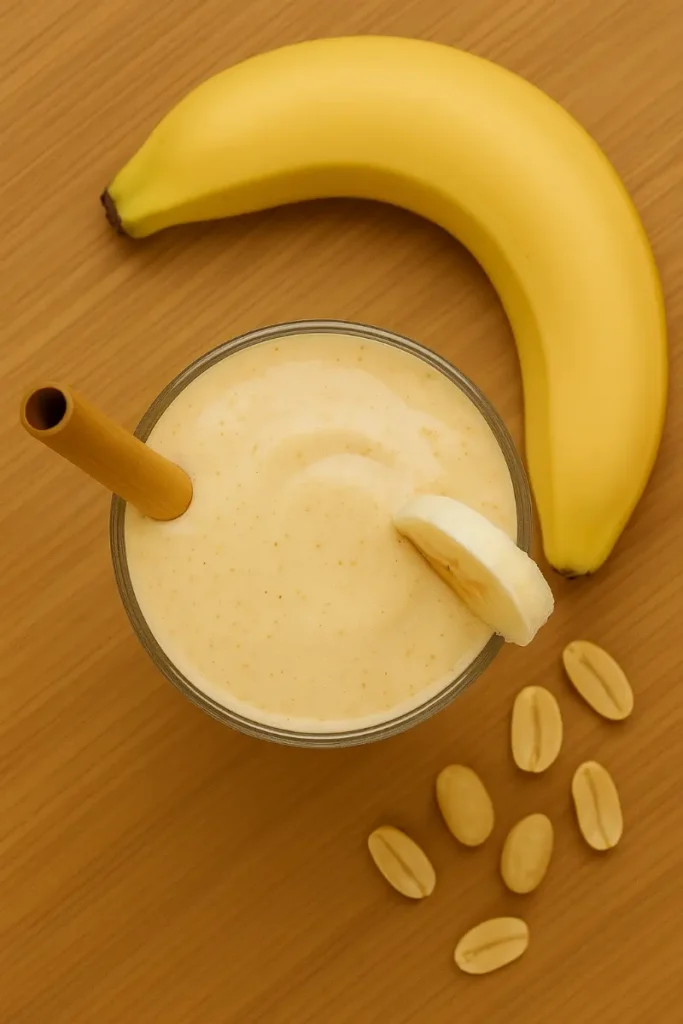
Conclusion
The peanut paradise tropical smoothie is more than just a sweet treat it’s a high-protein, energy-dense option that works well as a meal replacement or post-workout shake. With ingredients like peanut butter, banana, yogurt, and your choice of protein, it offers a solid mix of flavor and fuel.
That said, it’s not for every diet. The smoothie is high in sugar and calories, so it may not suit those on weight loss or low-carb plans. But for active individuals, gym enthusiasts, or anyone needing a filling, convenient option on the go—it’s a top performer.
Here’s what to keep in mind:
- Use it as a meal, not a snack
- Customize it to reduce sugar and calories if needed
- Pair it with fiber or greens to increase nutritional value
Whether you’re a loyal fan or trying it for the first time, the peanut paradise tropical smoothie delivers on both taste and performance when used strategically.
Looking for something different? Try the vibrant Blue Spirulina Smoothie for a colorful, nutrient-rich blend that supports energy and immunity.
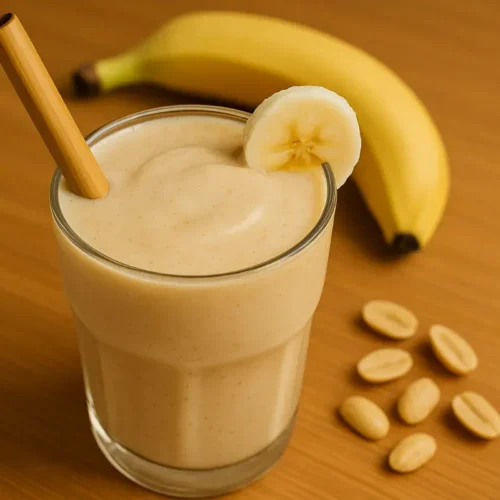
Peanut Paradise Tropical Smoothie
Elena KimEquipment
- 1 Blender High-speed preferred
Ingredients
- 1 tbsp peanut butter
- 1 whole banana
- ¾ cup Greek yogurt
- 1 scoop protein powder
- ½ cup water
- 1 cup ice
Instructions
- Add peanut butter, banana, yogurt, protein powder, water, and ice to a high-speed blender.
- Blend on high speed for 30–45 seconds until the mixture is smooth and creamy.
- Check the consistency. If too thick, add a splash of water and blend again briefly.
- Pour into a glass. Optionally garnish with a banana slice or sprinkle of crushed peanuts.
- Serve immediately and enjoy your peanut paradise tropical smoothie!
Notes
- Use ripe bananas for natural sweetness.
- Freeze banana slices ahead of time for a thicker, creamier texture.
- Swap Greek yogurt for a plant-based alternative to make it dairy-free.
- Choose whey or pea protein based on your dietary preference.
- For lower sugar, use half a banana or skip added sweeteners.
- Add chia seeds, flaxseed, or oats for extra fiber and fullness.
- Serve immediately after blending for the best taste and texture.







